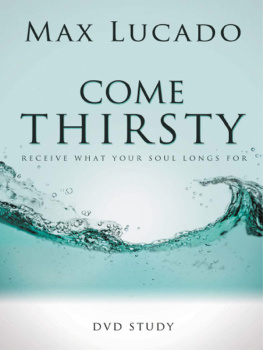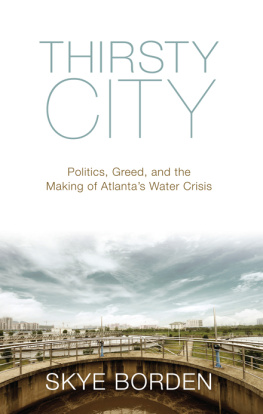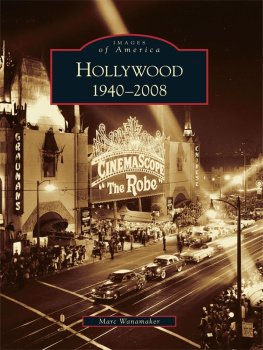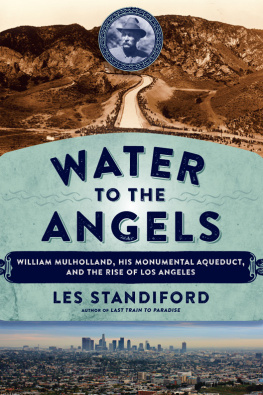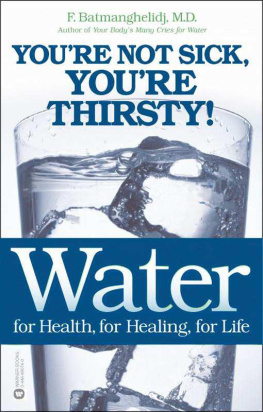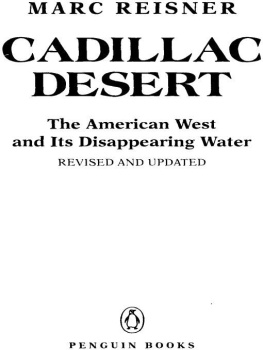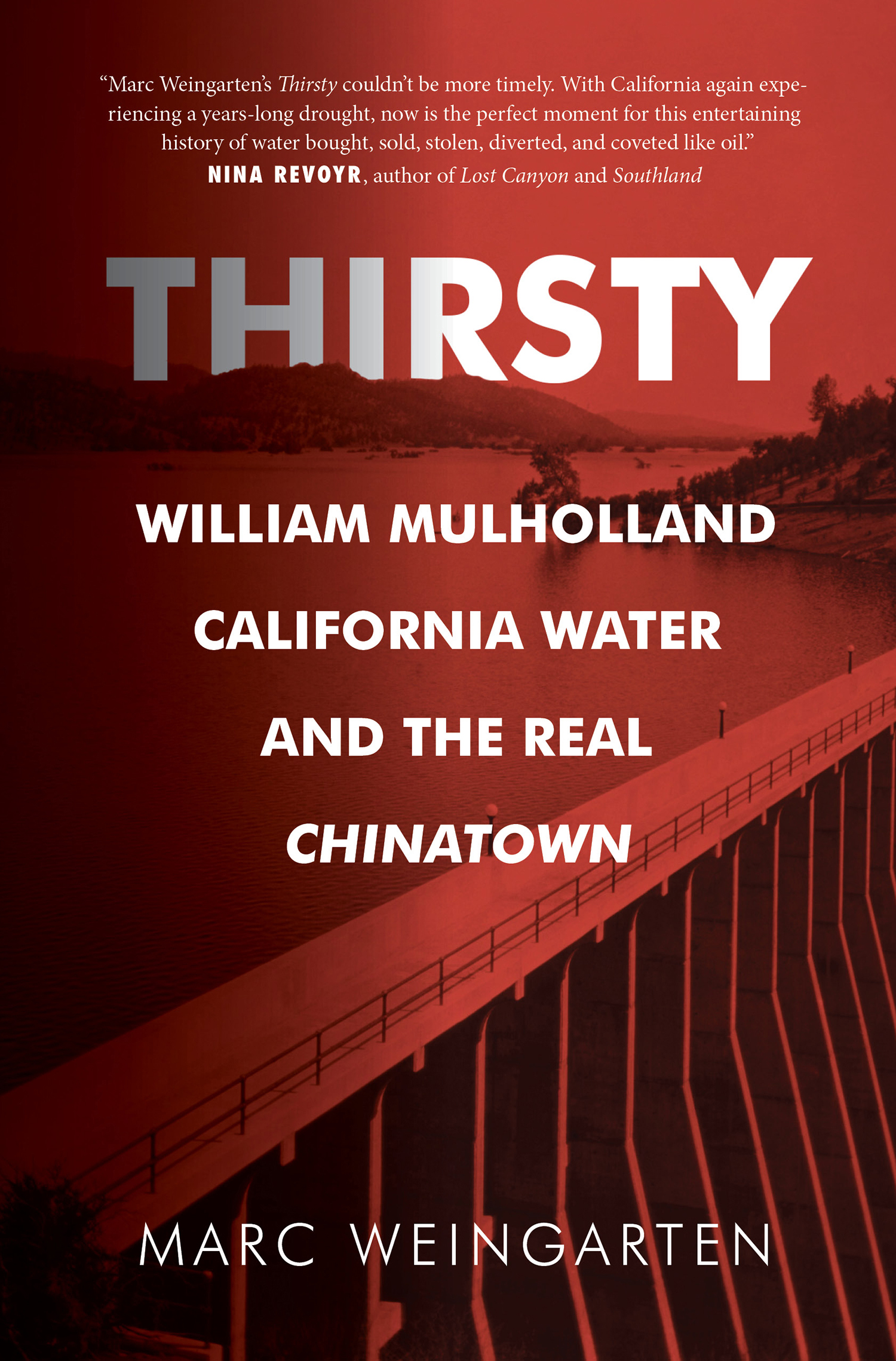This is a Genuine Vireo Book
A Vireo Book | Rare Bird Books
453 South Spring Street, Suite 302
Los Angeles, CA 90013
rarebirdbooks.com
Copyright 2019 by Marc Weingarten
All rights reserved, including the right to reproduce this book or portions thereof in any form whatsoever, including but not limited
to print, audio, and electronic. For more information, address:
A Vireo Book | Rare Bird Books Subsidiary Rights Department,
453 South Spring Street, Suite 302, Los Angeles, CA 90013.
Set in Minion
Printed in the United States
epub isbn : 9781942600176
10 9 8 7 6 5 4 3 2 1
Names: Weingarten, Marc, author.
Title: Thirsty : William Mulholland, California Water,
and the Real Chinatown
/ by Marc Weingarten.
Description: First Hardcover Edition. | A Vireo Book. | New York [New York] ; Los Angeles
[California] : Rare Bird Books, 2015.
Identifiers: ISBN 978-1-942600-02-2
Subjects: LCSH: Mulholland, William, 1855-1935. | Water-supplyCaliforniaLos Angeles
History. | Water-supply engineersCaliforniaLos AngelesBiography. | Los Angeles
(Calif.)History. | CaliforniaLos Angeles. | Chinese AmericansCaliforniaLos Angeles
History. | BISAC: Biography & Autobiography | Historical.
Classification: LCC HD4464.L7 W45 2015 |
DDC 979.4/9404092dc23
To Mike, who taught me the right way to tell a story
And to Lynn, for everything else.
Contents
Run of the River
Fall 1904
T he trip was brutal. William Mulholland and Fred Eaton were riding across the Western desert in a buckboard, a low-slung wooden carriage attached to four wagon wheels. The buckboard was strictly utilitarian; its bumpy ride made long distances a trial on the body and mind. As a symbol of Western settlement, however, the buckboard was apposite, having been a warhorse during the exploration and subsequent taming of the northwestern territories by the earliest homesteaders. Pioneers had dragged their families across the plains on these flimsy conveyances for hundreds of miles at a time. Now Eaton and Mulholland were about to embark on a trip that might have been described as settlement in reversethat is, if everything went according to plan.
Eaton brought along a satchel of cigars; if the wind wasnt picking up, the two men would smoke and reminisce about their salad days as young men on the make in Los Angeles, carving out careers for themselves in a place where all was new, and anyone with initiative could pave the road smooth for themselves. The two men had known each other since they worked in the old water company together. Both were brilliant engineers, with a high degree of self-regard. Impatient, petulant, ferociously driven, Mulholland and Eaton had taken jobs with the city because they wanted to help build it. A desk was death. They were men of action who wanted to erect the armature of an emerging Los Angeles.
And in the early years of the twentieth century, water was the fossil fuel of all great American cities.
Mulholland and Eaton had decamped from Los Angeles and slowly worked their way 233 miles to arrive at a place called the Owens Valley. Their city, Los Angeles, was still a backwater, yet full of incipient energies, run by municipal leaders who desperately wanted to turn it into a world-class metropolis. But the only way to effectuate that transformationand there was nothing in the one-hundred-plus-year history of Western settlement that would lead them to think it could even workwas to supply Los Angeles with an abundance of water from somewhere other than Los Angeles. Hundreds of miles away, in fact. And it would have to be enough water to obviate the need for anyone in Los Angeles to think about water.
It was Eatons idea. He had tipped off Mulholland to this weirdly verdant patch of land in the middle of the most arid of Western territories. The vegetation was fed by a river from the snowpack of the majestic Sierra Nevada mountain range. Despite alkaline deposits that turned the rivers surface chalky, the water was fresh and potable. And there was a seemingly endless supply of it; the only obstacle was figuring out how to get it from Owens Valley to Los Angeles.
As the buckboard lurched across the desert, Mulholland saw no signs of life, just a vanishing point on the horizon and the sun high in the sky. Where was Eaton taking him? The longer they drove, the more Mulhollands optimism turned to doubt.
Finally, after three days, they came upon the Owens River by way of the old mining town of Bishop. The evening sun had scored the sky pink. For the moment, Mulhollands faith in Eaton was restored, for here was a vast body of water, snaking through the valley floor with no impediments inhibiting its flow; it was, to Mulhollands eye, theirs for the taking.
As Eaton and Mulholland walked along the perimeter of the Owens River, Mulhollands mind started whirring; what would it take to bring this water to Los Angeles? Money for the project was of secondary importance. That would come, if Mulholland sold the city on this river the way he knew he could. The prospect of connecting the Owens River to Los Angeles began to excite him. Mulholland looked out at the barren land surrounding the river, and saw nothing to prevent him from building an aqueduct of conduits, pipes, and siphons that would nourish his adopted home.
Fred Eaton had other ideas. As the scion of one of the founding Anglo families of Southern California, he carried with him a sense of geographic proprietorship. His father had figured out how to tap into the water supply to create thriving orange groves in Pasadena. And, as a member of Pasadenas elite, it was Fred Eatons birthright to do as he pleased with that regions resources. Fred Eaton didnt bring Mulholland to Owens Valley because he felt it his civic duty to do so. He was only being true to his familys ethos of self-gain and he needed Mulholland to help him get over.
The two men didnt take the temperature of the citizenry on this trip, or even conduct any environmental tests. What mattered most was the river, which they both drank from and decided that it was the answer.
This trip was the start of an odyssey that would find the two men collaborating on one of the great civil engineering triumphs of the early twentieth century, which slaked the thirst of a city whose influence and muscle would radiate across every other major city in the world.
But then nearly four hundred people would die in the worst man-made disaster of the early twentieth centurya calamity in which they would both play a part.
But for now, in the gloaming of a fall day in 1904, there was only the river.
Part 1: Backwater, 18771904
Promised Land
W illiam Mulholland arrived on the coast of San Francisco in January 1877. He had five dollars in his pocket and a vague notion of visiting acquaintances south of the city. He was twenty-two.
How did Mulholland get here? It was less a question of desire than need. Given young Mulhollands straitened options in his hometown, the suffocating parochialism and class-based hierarchy, it only followed that opportunity was going to be found elsewhere. As the first of his family to vault his imagination beyond the reach of the Irish Sea, there was never a question that he needed to find a means of escape.
From the start, Mulholland was in search of his main chance. And if he was going to try and make something of himself, he might as well do it in an hospitable environment. Dublin, Mulhollands hometown, was an inkblot, dank and grimy, a town that the industrial revolution had passed by. Guinness brewed their beer there; Jamesons distilled their whiskey there, too. It was a city of manual labor and lateral mobility. To Mulholland, it was slow death.


